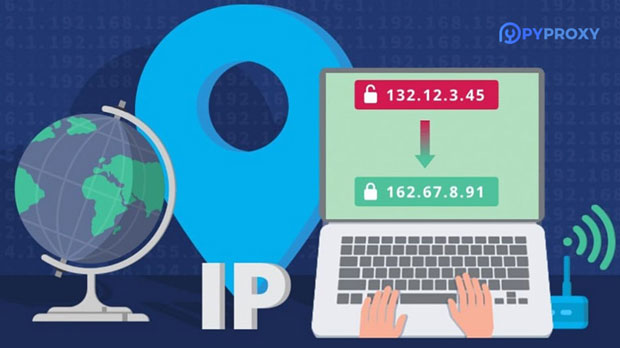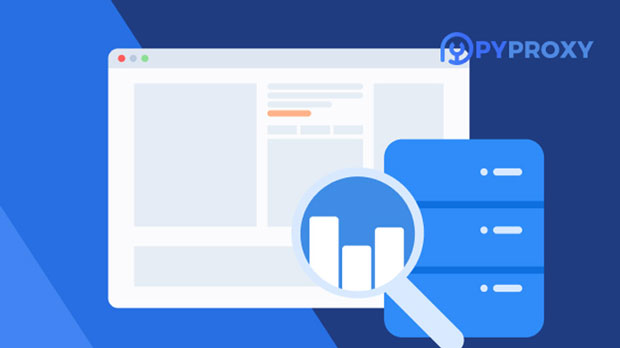In the age of online security and privacy, proxies have become an essential tool for both personal and professional use. PYPROXY, a popular proxy tool for Windows, is often used for routing traffic through different IP addresses, enhancing anonymity and security. One common question among users is whether Pyproxy can work seamlessly with proxy switching plugins, which are designed to automate the process of switching between different proxies. This article will explore the compatibility of Pyproxy with these plugins, discuss their potential use cases, and provide insights into how they can work together to offer better control over online traffic management. Understanding Pyproxy Proxy for WindowsBefore diving into compatibility, it’s important to understand what Pyproxy is and how it functions. Pyproxy is a Python-based proxy tool designed to run on Windows systems. It allows users to configure and manage proxies with ease, providing features like IP rotation, bandwidth management, and traffic encryption. These features make Pyproxy an excellent choice for users who need an extra layer of privacy or wish to bypass geographical restrictions.Pyproxy allows users to configure different types of proxies, including HTTP, HTTPS, and SOCKS proxies. By using Pyproxy, individuals can route their internet traffic through various proxy servers, masking their true IP address and enhancing security while online. This tool is especially beneficial for people who value online privacy, such as journalists, researchers, or individuals in countries with restricted internet access.The Role of Proxy Switching PluginsProxy switching plugins are designed to automate the process of switching between different proxy servers. These plugins are often used in web browsers or other applications to rotate IP addresses, which can prevent issues like geo-blocking, improve anonymity, and reduce the risk of IP bans. They are particularly useful for people who need to access multiple servers from various locations, or for those who wish to avoid detection while performing web scraping or other tasks requiring multiple IPs.These plugins are typically integrated into web browsers, allowing users to switch proxies with the click of a button. Many popular proxy switching plugins can handle a wide variety of proxy types, including HTTP, SOCKS, and even VPNs, offering a versatile solution for managing online traffic. However, the compatibility between these plugins and external proxy tools like Pyproxy is something that needs to be explored in more depth.Compatibility Between Pyproxy and Proxy Switching PluginsThe main question that arises is whether Pyproxy and proxy switching plugins can work together effectively. The short answer is: Yes, but with certain limitations. To understand why, we need to explore the technical details of how these two systems operate.1. Proxy Management: Both Pyproxy and proxy switching plugins are designed to manage proxies, but they do so in different ways. Pyproxy, for instance, acts as a standalone proxy server that manages proxy connections at a system-wide level. It allows users to configure and route all internet traffic through designated proxy servers. Proxy switching plugins, on the other hand, operate within the context of a specific application (typically a web browser), allowing users to switch between different proxy servers on a per-session basis.2. System-wide vs. Application-level Configuration: One of the main differences between Pyproxy and proxy switching plugins is the scope of their configurations. Pyproxy is a system-level tool, meaning it can route traffic from any application on the system that supports proxy configurations. In contrast, most proxy switching plugins are browser-specific, meaning they can only route traffic from the browser in which the plugin is installed. This creates a situation where Pyproxy handles the overall proxy management, while the plugin manages proxy switching within specific applications.3. Integration and Automation: The real benefit of combining Pyproxy with a proxy switching plugin lies in automation. While Pyproxy allows for proxy rotation and traffic encryption, it doesn’t have a built-in mechanism for automatically switching proxies on a regular basis. This is where proxy switching plugins come in, offering the ability to rotate proxies at defined intervals or based on specific triggers, such as changing IPs after a certain number of requests. This automation is crucial for tasks like web scraping, where a large number of requests need to be sent without triggering IP bans. By using Pyproxy to configure and manage the proxy connections and a proxy switching plugin to automate the switching process, users can create a robust system for managing their online traffic. This combination allows for better control, improved security, and enhanced anonymity.Use Cases for Combining Pyproxy with Proxy Switching PluginsNow that we understand the compatibility of Pyproxy and proxy switching plugins, let’s explore some practical use cases where their combination can provide significant value.1. Web Scraping: One of the most common applications of proxies is web scraping, where a bot collects data from websites. Using Pyproxy to route traffic through multiple proxy servers can prevent IP bans and reduce the risk of detection. By integrating a proxy switching plugin, users can automate the process of rotating proxies, ensuring that each request comes from a different IP. This makes it easier to collect large amounts of data from various websites without running into issues.2. Online Privacy and Anonymity: For individuals who are concerned about their online privacy, the combination of Pyproxy and a proxy switching plugin offers a powerful solution. Pyproxy’s system-wide proxy management can ensure that all internet traffic is routed through secure, anonymous proxy servers. The proxy switching plugin, in turn, can rotate these proxies on a regular basis, making it even harder to track a user’s activities online.3. Bypassing Geo-blocking: Many users rely on proxies to bypass geo-restrictions and access content that may be blocked in their country. By combining Pyproxy with a proxy switching plugin, users can easily switch between proxies located in different countries, allowing them to access region-locked content. This can be especially useful for streaming services or accessing websites that are otherwise unavailable in certain regions.Challenges and LimitationsWhile combining Pyproxy and proxy switching plugins can offer many benefits, there are some challenges and limitations to consider.1. Compatibility Issues: Not all proxy switching plugins may work seamlessly with Pyproxy, particularly if the plugin relies on specific browser configurations or lacks support for system-wide proxy management. Users may need to test various plugins to find one that integrates well with Pyproxy.2. Performance Overhead: Running both Pyproxy and a proxy switching plugin can add some performance overhead to the system. The additional layer of proxy management and switching may result in slower internet speeds, especially if many proxies are being used or if the system’s hardware is not powerful enough to handle the extra workload.3. Security Concerns: While proxies enhance privacy, they are not foolproof. Combining Pyproxy with a proxy switching plugin does not guarantee complete anonymity, especially if users are not careful about choosing high-quality proxies. Some proxies may leak data, expose the user’s true IP, or even be malicious.In conclusion, Pyproxy Proxy for Windows can indeed work with proxy switching plugins to provide enhanced control over online traffic management. By combining Pyproxy’s system-wide proxy configuration with the automation capabilities of proxy switching plugins, users can enjoy better privacy, security, and anonymity online. However, it is important to understand the limitations and challenges involved, such as compatibility issues, performance overhead, and security risks. With careful configuration and management, this combination can offer significant value, especially for tasks like web scraping, bypassing geo-restrictions, and ensuring online privacy.
Oct 17, 2025


































































